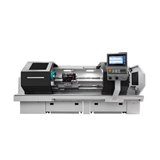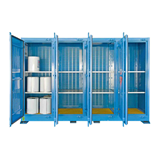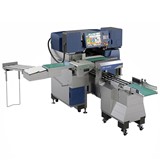They know there are no shortcuts and have the same basic checklist in place for every item they bring to our shores. As a first time importer you can use these steps to guide you through some essentials of the importing process.
Get a good customs agent
The first rule of importing: don't even think about going it alone. If you plan to bring marketable goods into Australia, get yourself a customs agent as early as you can. They know the importing rules and regulations and can ensure a fast, safe and economical passage for your merchandise. They'll do all the fiddly documentation, jump through all the tax, duty and license hoops and get your goods cleared through customs with a minimum of fuss. They'll do all this for quite a reasonable fee.
Negotiate with your supplier
Getting your merchandise at the cheapest price might seem like the only real objective here, but it's far from it. Other factors such as your payment terms may be even more important if bundles of ready cash aren't available. If your product is seasonal, you'll want to nail down the delivery; not always as easy as it seems with factory lead times and shipping delays. And don't forget after sales service. If you have any faulty goods, you need to have a clear agreement about returns. Plan out your priorities in advance and be prepared to compromise.
Calculate transport costs and duties up front
There are plenty of costs to consider before you can arrive at an accurate landed cost for your product and calculate its ultimate cost to the consumer – freight, shipping container costs (if applicable), insurance, taxes and duties. A product with an ex-factory cost of $1 may end up with a landed cost of $1.40 after all the extras are added up. Quite a difference, so make sure you get an accurate cost summation so that you can accurately assess your product's sales potential.
Find the right shipping company

It's not just about the cheapest freight costs; it's about value for money. If a shipping company's price sounds too low, it probably is and there may be alarming deficiencies in their practices. If your goods arrive in bad condition, that price won't look so good anymore. So the first word in shipping is 'reputable'. Research other similarly sized importers and find out who they have had success with. And don't just judge shipping companies on the complaints they have received; judge them on how they resolve those complaints. They all get complaints at some stage - it's the nature of the business when you're dealing with Mother Nature on a daily basis. Once you have a short list of shipping companies who seem to match your standards and needs, get at least three quotes.
Insure to ensure nothing goes wrong
Should you insure your goods? Absolutely. Whether your imports are coming by air or sea, things can go wrong. Even once they hit port, unexpected nastiness such as fire, theft and storm damage can befall your precious cargo. So you can't afford not to insure, but depending on the terms arranged with your supplier, this may be their responsibility. With CIF and CIP contracts, the supplier must organise insurance. If your goods are FOB (free on board) or CFR (cost and freight), insurance is up to you.







-160x160-state_article-rel-cat.png)








-160x160-state_article-rel-cat.png)



